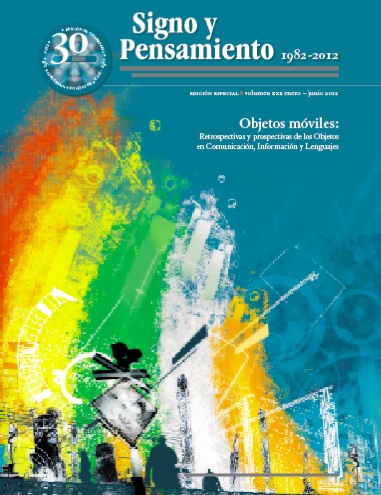Resumen
Los últimos 25 años del Siglo XX fueron un período sin precedentes en cuanto a la magnitud, finalidad y velocidad de transformación histórica. Así, nuestra única certeza es que nuestro futuro será muy distinto de nuestro presente y que todo cambio será aun más rápido. La razón es la revolución tecnológica, una idea que se ha vuelto común en esta era de la tecnocultura. La aceleración de las transformaciones experimentadas por los medios tecnológicos de producción de lenguajes y de comunicación es impresionante. Desde la invención de la fotografía, ya hemos alcanzado la quinta generación de tecnologías comunicacionales. Este trabajo tiene como objetivo presentar brevemente esas cinco generaciones tecnológicas.
Castells, M. (1996), The rise of the network society, New York, Blackwell.
—.(2003), La galaxia internet. Reflexiones sobre internet, empresa y sociedad, Raúl Quintana (trad.), Barcelona, Debolsillo.
Koo, L. (2011), “Web 3.0: Impacto na Sociedade de Serviços”, tese de doutorado, Pontifícia Universidade Católica de São Paulo.
Lemos, A. (2011), “Locative media and surveillance at the boundaries of informational territories”, em ICTs for Mobile and ubiquitous urban infrastructure. Surveillance, locative media and global networks, Firmino, Rodrigo J. et al (eds), New York, Information Science Reference, p. 129-149.
Morais, E. e Soares, M. (2006), “Web Semântica para Máquinas de Busca”, em http://www2.dcc.ufmg.br/~nivio/cursos/pa03/seminarios/seminario7/seminario7.pdf, acesso 25/06/2011.
O´ Reilly, T. (2007), “Today’s Web 3.0 Nonsense Blogstorm”, em http://radar.oreilly.com/archives/2007/10/web-30-semantic-webweb-20.html,acesso 17/05/2011.
Recuero, R. (2009), As Redes Sociais na Internet, Porto Alegre, Sulina.
Santaella, L. (2007), Linguagens líquidas na era da mobilidade, São Paulo, Paulus.
— (2010), A ecologia pluralista da comunicação. Conectividade, mobilidade, ubiqüidade, São Paulo, Paulus.
Santaella, L. e Lemos, R. (2010), Redes sociais digitais. A cognição conectiva do Twitter, São Paulo, Paulus.
Spivack, N. (2007), “Making Sense of the Semantic Web and, Twine”, em http://novaspivack.typepad.com/nova_spivacks_weblog/2007/11/making-sense-of.html, acesso 29/11/2010.
— (2009), “A New Economic Framework for Content in Web 3.0.”, em http://novaspivack.typepad.com/nova_spivacks_weblog/2009/11/a-new-economic-frameworkfor-content-in-web-30.html, acesso 29/11/2010.
Wheeler, S. (2010), “Web 3.0: The way forward?”, Apresentado em Vital Meet, St James School, Exter: 14 July, 2010. Publicado em <http://www.slideshare.net/timbuckteeth/web-30-the-way-forward/download, acesso 20/10/2010.
Esta revista científica se encuentra registrada bajo la licencia Creative Commons Reconocimiento 4.0 Internacional. Por lo tanto, esta obra se puede reproducir, distribuir y comunicar públicamente en formato digital, siempre que se reconozca el nombre de los autores y a la Pontificia Universidad Javeriana. Se permite citar, adaptar, transformar, autoarchivar, republicar y crear a partir del material, para cualquier finalidad (incluso comercial), siempre que se reconozca adecuadamente la autoría, se proporcione un enlace a la obra original y se indique si se han realizado cambios. La Pontificia Universidad Javeriana no retiene los derechos sobre las obras publicadas y los contenidos son responsabilidad exclusiva de los autores, quienes conservan sus derechos morales, intelectuales, de privacidad y publicidad.
El aval sobre la intervención de la obra (revisión, corrección de estilo, traducción, diagramación) y su posterior divulgación se otorga mediante una licencia de uso y no a través de una cesión de derechos, lo que representa que la revista y la Pontificia Universidad Javeriana se eximen de cualquier responsabilidad que se pueda derivar de una mala práctica ética por parte de los autores. En consecuencia de la protección brindada por la licencia de uso, la revista no se encuentra en la obligación de publicar retractaciones o modificar la información ya publicada, a no ser que la errata surja del proceso de gestión editorial. La publicación de contenidos en esta revista no representa regalías para los contribuyentes.


